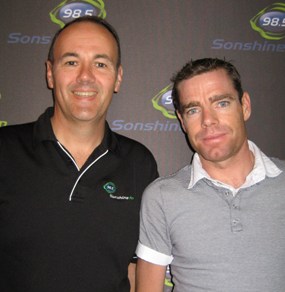 Cadel Evans is set to become the first Australian to win the biggest cycling event on the planet when he rides into Paris later today. After being runner up twice in the past, Evans will be one step higher on the Tour de France podium and at the age of 34, he’ll be the oldest winner in 88 years.
Cadel Evans is set to become the first Australian to win the biggest cycling event on the planet when he rides into Paris later today. After being runner up twice in the past, Evans will be one step higher on the Tour de France podium and at the age of 34, he’ll be the oldest winner in 88 years.
The final day of racing is traditionally a procession into the capital of France to end three weeks of grueling racing.
Cadel ripped the Yellow Jersey off the shoulders of Andy Schleck in yesterday’s time trial with a blistering effort. He missed out on winning the stage by just a few seconds but his effort was more than enough to turn his 57 second deficit to Schleck into a 1 minute 34 second lead.
I had the honor of chatting with Cadel just a day or two after his switch to the BMC Team was announced in 2009. I asked him who would be runner up when he won the 2010 Tour de France. Unfortunately things didn’t go according to plan last year but it will be an emphatic win a year later. Cadel is a quietly spoken athlete who was a pleasure to interview. I’ve interviewed hundreds of people but my chat with Cadel will always be a highlight of my time in radio.
You can listen to my radio interview with Cadel by clicking the play button on the audio player at the bottom of this post.
Lance Armstrong’s success in the world’s most watched annual sporting event helped to increase participation in the sport in the US. I’m sure that Cadel’s success will get more Aussies cycling in the coming years.
Do you think some of your friends would enjoy reading Cadel Wins Tour de France 2011? Please use the buttons below to share the post. Thanks.

 It’s the most wonderful time of the year. The 2011
It’s the most wonderful time of the year. The 2011  I must admit that if I was badly injured I’d give myself license to take some time off my bike. Cadel Evans doesn’t quite see things that way.
I must admit that if I was badly injured I’d give myself license to take some time off my bike. Cadel Evans doesn’t quite see things that way.